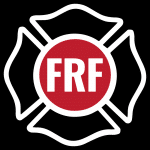Firefighter Fitness Motivation
My ultimate goal is to help firefighters, EMTs and paramedics prepare for the physical demands of the job. I often perform research especially about firefighter fatalities and injuries. Recently I was reviewing the fatality statistics for 2011 which motivated me to create this post.
In 2011, firefighter fatalities included 27 career firefighters, 51 volunteer firefighters, and 5 part-time or full-time members of wildland or wildland contract fire agencies.
Younger firefighters were more likely to have died as a result of traumatic injuries, such as injuries from an apparatus accident or becoming caught or trapped during firefighting operations. Stress-related deaths are rare below the 31 to 35 years of age category and, when they occur, often include underlying medical conditions (which is why it is so important to get yearly physicals).
Obviously, you understand that firefighting is extremely strenuous physical work and is likely one of the most physically demanding activities that the human body performs. Stress or overexertion is a general category that includes all firefighter deaths that are cardiac or cerebrovascular in nature such as heart attacks, strokes, and includes other events such as extreme climatic thermal exposure. Classification of a firefighter fatality in this cause of fatal injury category does exclusively indicate that a firefighter was in poor physical condition but it does raise the question to their level of fitness.
Fifty firefighters died in 2011 as a result of stress or overexertion:
• forty-eight firefighters died due to heart attacks;
• one firefighter died due to a cerebrovascular accident (CVA); and
• one firefighter died from heat exhaustion
The ultimate objective of the U.S. Fire Administrations efforts is to reduce the number of firefighter deaths through an increased awareness and understanding of their causes and how they can be prevented. Firefighting, rescue, and other types of emergency operations are essential activities in an inherently dangerous profession, and unfortunate tragedies do occur. These are the risks all firefighters accept every time they respond to an emergency incident. However, the risks can be greatly reduced through efforts to improve training, emergency scene operations, and firefighter health and safety initiatives. Ultimately, you as a firefighter have the greatest control over your own health.
- Do you workout on a regular basis?
- Do you fuel your body like an athlete?
- Do you get regular check ups and yearly physicals?
- Do you work on your skills often (raise ladders, carry equipment, swing tools, etc.)?
In general the obesity rates of firefighters is higher than the general public. In this economy we (as an industry) need to do all we can to promote our value to our communities. Does an overweight firefighter or officer promote our value?
Lets start reducing fatalities by reducing obesity rates…we owe it to each other and to the communities we serve.
Stay Safe and Healthy,
A. Zamzow
www.firerescuefitness.com
I’d love to know how you stay motivated or motivate others on your department so please leave a comment or email me.
Source: http://www.usfa.fema.gov/downloads/pdf/publications/ff_fat11.pdf



